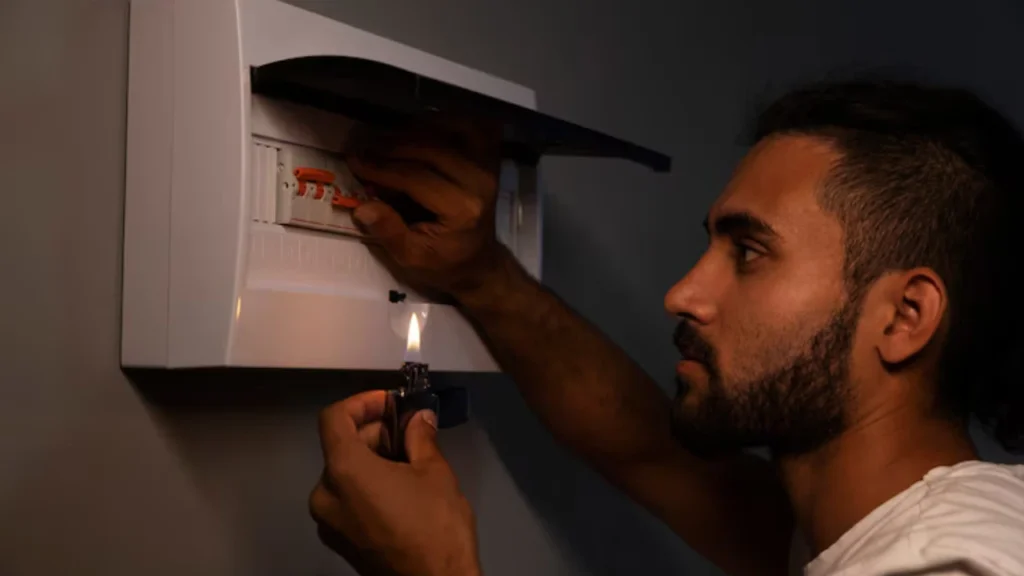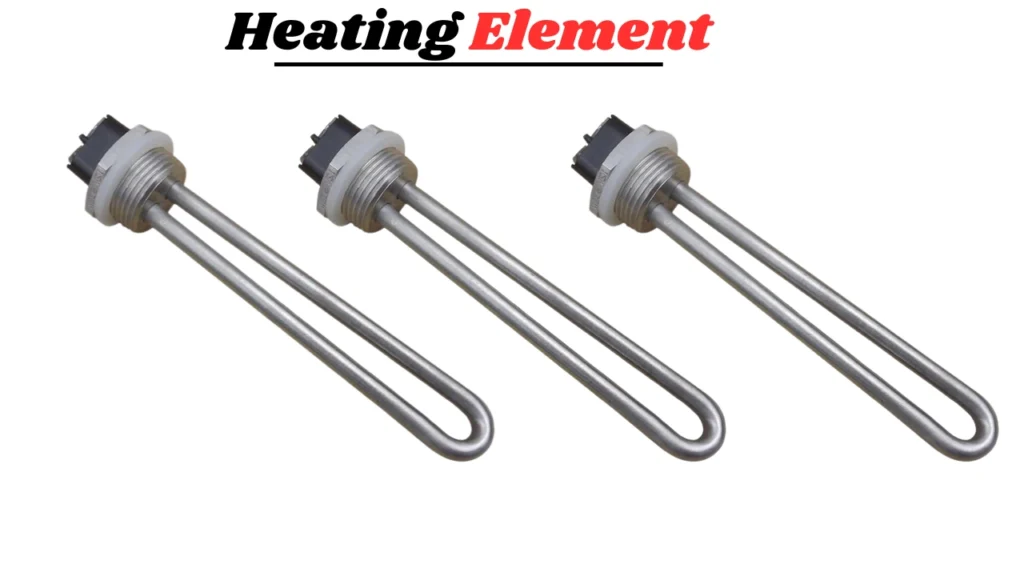
Introduction: Electric Water Heater Not Working
If your Electric Water Heater Not Working, you’re not alone. Electric water heaters can fail for many reasons. Some problems are simple to fix. Others may require a professional. This guide explains the common causes. And it shows you how to fix each one. Let’s get straight to the solutions.
Main Reasons Your Electric Water Heater Not Working
- Breaker Switch Turned Off Automatically
- Faulty thermostat
- Burnt-out heating element
- High-temperature limit switch triggered
- Sediment buildup inside the tank
- Broken dip tube
- Power cord issues
- Leaking tank or fittings
Now, let’s look at each problem and how to fix it.
How to Fix a Tripped Circuit Breaker

Go to your home’s electrical panel.
Find the breaker labeled “Water Heater.”
If it’s in the “OFF” position or the middle, it’s tripped.
Switch it completely off.
Wait 5 seconds.
Then flip it back to “ON.”
If it trips again, there may be an electrical issue.
Do not keep resetting it repeatedly.
That can be dangerous.
In that case, call a licensed electrician.
How to Reset the High-Temperature Limit Switch
Cut off the electrical supply to the water heater by flipping the breaker.
Remove the upper access panel on the heater.
You’ll see the upper thermostat with a red reset button.
Press the red button firmly.
You may hear a click.
Replace the panel cover.
Turn the breaker back on.
Wait a few hours for the water to heat up.
If it trips again, the thermostat or element may be faulty.
Replacing a Faulty Heating Element

Turn off the breaker first.
Drain a few gallons of water from the tank.
Use a water heater element wrench to remove the element.
Check it for cracks or burn marks.
Buy a replacement with the same wattage and size.
Install the new element.
Tighten it securely.
Refill the tank.
Turn on the breaker.
Wait 1-2 hours to test for hot water.
If still no hot water, check the thermostat.
Replacing a Defective Thermostat
Disconnect the power from the water heater.
Take off the access panels.
Use a multimeter to test the thermostat.
No reading means it’s bad.
Disconnect the wires.
Unscrew the thermostat.
Install a new one that matches your model.
Reconnect the wires.
Replace the panel.
Turn the breaker back on.
Wait a few hours to check the result.
Dealing with Sediment Buildup
Over time, minerals in the water settle at the tank’s bottom.
This blocks the heating element.
And it reduces water heater efficiency.
Drain the tank completely.
Flush it with clean water.
Open the cold water supply for a few minutes.
Let the water stir up the sediment.
Drain it again.
Repeat until water runs clear.
Do this once a year to prevent problems.
Addressing a Faulty Dip Tube
The dip tube brings cold water to the bottom of the tank.
If it breaks, cold water stays at the top.
And mixes with hot water, lowering temperature.
Turn off water and power.
Disconnect the cold water inlet pipe.
Pull out the dip tube using pliers.
Inspect it for cracks or wear.
Replace with a new one if damaged.
Reassemble everything tightly.
Turn water and power back on.
Wait for hot water recovery.
Checking and Replacing the Power Cord
Check the power cord if your unit plugs into an outlet.
Make sure it’s not frayed or burnt.
Try plugging something else into the outlet to test it.
If the outlet works, the cord might be bad.
Unplug the heater.
Remove the junction box cover.
Disconnect the old cord.
Replace with a new heavy-duty power cord.
Reconnect wires securely.
Plug in and test the heater again.
Troubleshooting Water Leaks
Inspect around the base of the tank.
Look for water pooling or dripping.
Check the pressure relief valve and drain valve.
Tighten any loose fittings with a wrench.
If the tank itself is leaking, it can’t be repaired.
You’ll need a full replacement.
Don’t ignore a leak.
It can damage floors and walls over time.
When to Call a Professional
When you’re unsure how to handle electrical parts, call a pro.
If there’s rust-colored water, the tank lining may be corroded.
If resetting or replacing parts doesn’t fix the issue, get help.
Licensed plumbers or electricians can find deeper problems.
It’s safer than risking electric shock or a flooded room.
FAQs
What could be causing my electric water heater to stop heating?
It could be a tripped breaker, faulty thermostat, or bad heating element.
How do I know if the heating element is bad?
Use a multimeter to test for continuity.
No reading means it’s defective.
Can I replace the thermostat myself?
Yes, but turn off all power first.
Follow the instructions carefully.
How often should I flush the tank?
Flush it once a year to remove sediment.
What if I smell burning near my water heater?
Shut it off immediately.
It may have a burnt wire or failing part.
Is it safe to reset the high-limit switch often?
No.
If it trips frequently, something is wrong.
Can a water heater last 20 years?
Rarely.
Most last 8 to 12 years.
Regular maintenance helps extend life.
What size breaker should a water heater have?
Usually 30 amps for a standard 240V unit.
Check your heater’s manual to confirm.
Can I use hot water while troubleshooting?
Use caution.
Let the tank cool before opening panels or draining.
Is replacing the dip tube hard?
It’s simple with basic tools.
Takes about 30 minutes.
Conclusion
An electric water heater can stop working for many reasons.
Most issues are easy to diagnose.
Start with the circuit breaker.
Then check the thermostat and heating element.
Don’t ignore leaks or odd noises.
Flush the tank yearly.
Use the right tools for repairs.
Always cut power before working on the unit.
Call a professional for serious problems.
A working water heater keeps your home comfortable.
With proper care, it will serve you well for years.
⚠️ Safety Disclaimer:
Always turn off the power at the circuit breaker before inspecting or repairing your electric water heater.
If you’re unsure or uncomfortable working with electricity or plumbing, call a licensed professional.
Never attempt repairs if there is visible damage, leaking water near electrical parts, or a burning smell.

